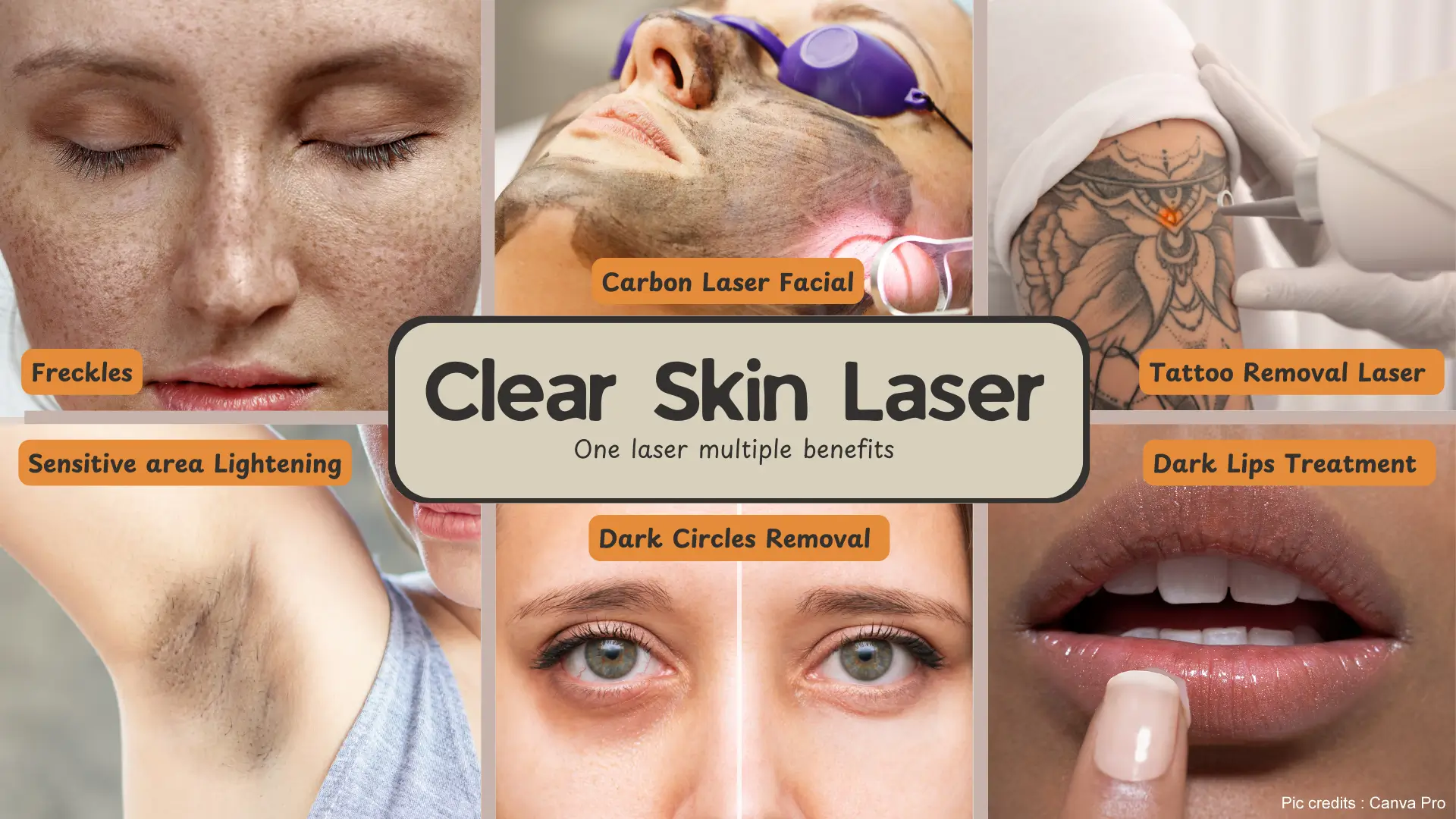Typically, **6-8 sessions** are recommended for optimal results, with maintenance treatments for long-term benefits.
Laser Toning for Melasma
Melasma is a common skin condition characterized by dark, discolored patches on the face, typically caused by sun exposure, hormonal changes, or genetics. It can be challenging to treat, especially in deeper layers of the skin. Laser toning has emerged as one of the most effective non-invasive treatments for melasma, offering a targeted solution to reduce pigmentation and improve overall skin tone.
What is Laser Toning for Melasma?Laser toning utilizes low-energy Q-switched Nd:YAG laser technology to break down excess melanin in the skin responsible for pigmentation. This treatment focuses on delivering controlled heat to the affected areas without damaging surrounding tissues. The laser’s wavelength targets melanin deposits in the dermal layer, reducing their appearance over time and stimulating collagen production for smoother, rejuvenated skin.
Why Dermatologists Recommend Laser Toning for MelasmaDermatologists often recommend laser toning for melasma because:
- It’s a non-invasive solution that can penetrate deep layers of the skin to address both epidermal and dermal melasma.
- Minimal downtime allows patients to resume daily activities shortly after the procedure.
- Safe for all skin types when performed under professional supervision.
- Gradual results ensure natural skin tone restoration without abrupt changes, making it a preferred long-term treatment.
- Precise Melanin Targeting: Laser toning selectively breaks down melanin, reducing pigmentation without damaging healthy skin.
- Improved Skin Texture: It enhances collagen production, leading to smoother skin with reduced fine lines and wrinkles.
- Minimal Downtime: Most patients experience mild redness post-treatment, but can return to daily activities quickly.
- Even Skin Tone : Regular treatments result in a visibly brighter, even-toned complexion with reduced melasma patches.
Laser toning is suitable for those struggling with persistent melasma that has not responded well to topical treatments. It's ideal for both men and women, particularly those with mild to moderate melasma. However, candidates should avoid excessive sun exposure and be committed to sun protection post-treatment to prevent further pigmentation.
Expected Downtime and SymptomsDowntime after laser toning is minimal, typically involving slight redness or mild swelling, which subsides within a few hours. You may experience temporary darkening of the melasma spots as the skin heals, but this will gradually lighten within a few days.
Recovery ProcessLaser toning for melasma typically requires multiple sessions (usually 6-8 treatments) spaced 2-4 weeks apart for optimal results. Visible improvement in skin tone can be seen after the first few sessions, with continued progress as treatments progress. Regular use of sunscreen and follow-up sessions are essential to maintain results and prevent melasma recurrence.
Top 3 Scenarios for Best Results- Hormonal Melasma: Ideal for melasma triggered by pregnancy or birth control, laser toning effectively targets deep pigmentation.
- Sun-Induced Melasma: For melasma caused by excessive UV exposure, this treatment can lighten the appearance of dark patches over time.
- Post-Inflammatory Hyperpigmentation: Those with lingering pigmentation from acne scars or skin trauma may also benefit from this treatment.
Most patients report only a mild tingling or warm sensation during treatment, making it very tolerable
While it significantly reduces pigmentation, melasma can recur with sun exposure. Maintenance treatments and diligent sun protection are essential for lasting results.
There is minimal downtime, with some redness or mild swelling that subsides within hours.
The results are long-lasting with proper sun care, though melasma may return if UV protection is not maintained.
At Skin Worldwe offer advanced laser toning treatments using Q-switched Nd:YAG technology to effectively target melasma and other pigmentation issues. Book your consultation today and take the first step toward achieving clear, radiant skin.








